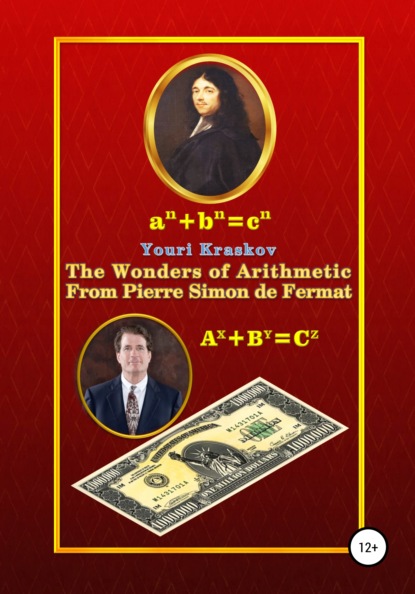По всем вопросам обращайтесь на: info@litportal.ru
(©) 2003-2024.
✖
The Wonders of Arithmetic from Pierre Simon de Fermat
Год написания книги
2021
Настройки чтения
Размер шрифта
Высота строк
Поля
=2m(m+1)+1
2. a
=2(m+1); b
=m(m+2); c
= m(m+2)+2 (6)
3. a
=3m b
=4m; c
=5m
Equations (6) are the solutions of the Pythagoras’ equation for any natural number m. If the number m is composite, then the number of solutions increases accordingly. In particular, if m consists of two prime factors, then the number of solutions increases to nine[57 - For example, if m = p
p
then in addition to the first three solutions there will be others: A
=p
; B
=2p
p
; A
=p
; B
=2p
p
; A
=2p
; B
=p
p
; A
=2p
; B
=p
p
; A
=p
; B
=2p
; A
=p
; B
=2p
]. Thus, we have a new way of calculating all without exception triples of Pythagoras’ numbers, while setting only one number m instead of two numbers that must be specified in the Pythagoreans identity. However, the usefulness of this method is not limited only to this since the same key formula (2) is also valid for obtaining a general solution of equations with higher powers.
Using the method to obtain solutions of (1) for the case n=2, it is also possible to obtain solutions for n>2 by performing the substitution (1) in (2) and exponentiating n both sides of (2). To do this, first we derive the following formula[58 - Formula (7) is called Fermat Binomial. It is curious that the same name appeared in 1984 in the novel "Sharper than the epee" by the Soviet science fiction writer Alexander Kazantsev. This formula is not an identity because in contrast to the identity of Newton Binomial in addition to summands, there is also a sum of them, but with the help of Fermat Binominal it is easy to derive many useful identities in particular, factorization of the sum and difference of two identical powers [30], see also Pt. 4.4.]:
(x+y)
=z
=zz
=(x+y)z
=xzz
+yz
=
x(x+y)z
+yz





